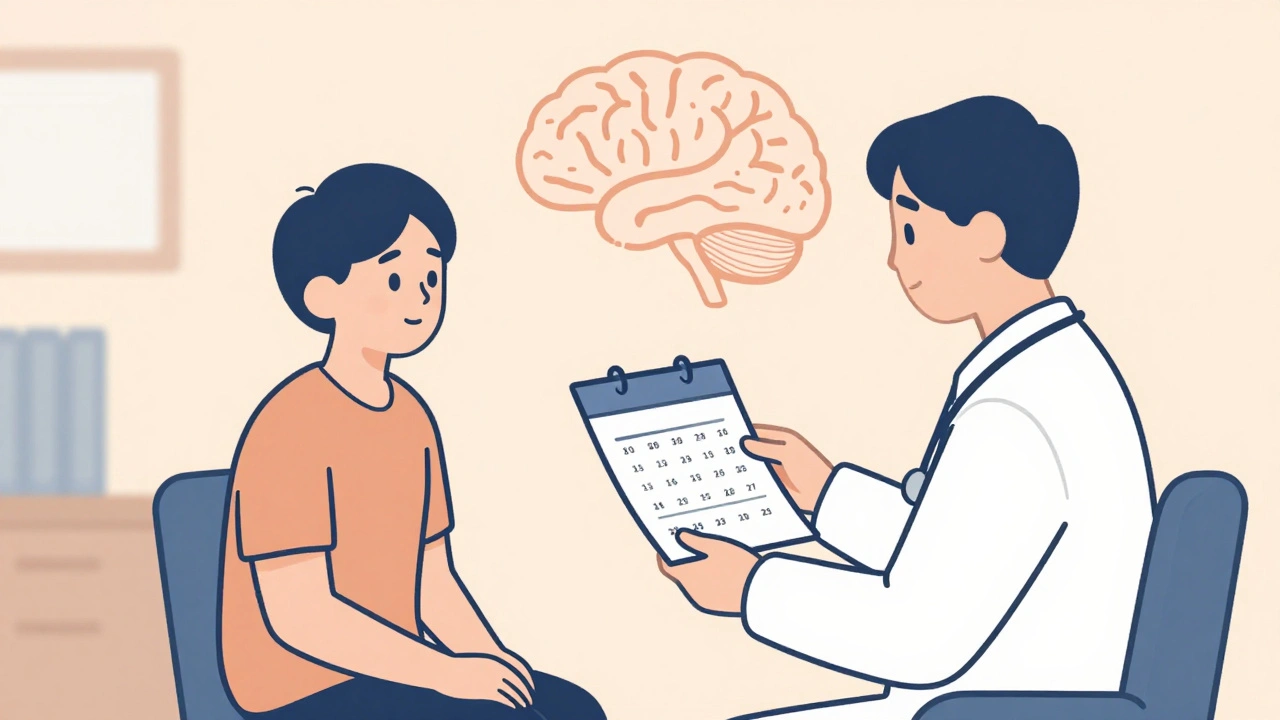
Learn how to safely talk to your doctor about stopping or tapering a medication. Discover why abrupt discontinuation is dangerous, what tapering schedules actually look like, and how to ensure your provider follows evidence-based guidelines.
If you’ve stopped a medication, alcohol, nicotine, or any other substance, you’ll probably notice a mix of physical and mental changes. Those changes are called withdrawal symptoms. They happen because your body is used to the drug’s presence and now has to readjust. Knowing what to expect can make the process less scary and help you plan ahead.
Most withdrawal experiences share a few core symptoms: anxiety, shaky hands, sweating, and trouble sleeping. Opioids often add nausea, muscle aches, and intense cravings. Alcohol can bring headaches, tremors, and in severe cases, seizures. Nicotine withdrawal usually shows up as irritability, hunger spikes, and a strong urge to smoke. Even prescription drugs like benzodiazepines cause a “brain fog” and tremors when stopped abruptly.
First, never quit a powerful substance cold‑turkey without medical advice. A doctor can taper the dose, so your body eases out gradually. Hydration is a simple but big help—water flushes out toxins and reduces headaches. Light exercise, like a short walk, can lift mood and calm nerves. Over‑the‑counter meds such as ibuprofen for aches or anti‑nausea tablets for stomach upset can also soften the blow.
Nutrition matters, too. Focus on balanced meals with protein, whole grains, and plenty of fruits and veggies. Protein helps rebuild neurotransmitters, while complex carbs stabilize blood sugar, reducing cravings. If you’re dealing with insomnia, keep the bedroom dark, avoid screens, and try a warm bath before bed. Some people find natural aids like melatonin or valerian root useful, but talk to a pharmacist first.
Support networks are a game‑changer. Tell a friend or family member you’re going through withdrawal; their encouragement can keep you motivated. Online forums and local support groups give you a space to share tips and hear success stories. If anxiety spikes, breathing exercises—four seconds in, four seconds out—can calm the nervous system fast.
Watch for red‑flag symptoms that need professional help. Severe vomiting, a rapid heartbeat, hallucinations, or seizures are emergencies. If you notice any of these, call emergency services right away. For most mild to moderate cases, a telehealth visit can get you a prescription for a short‑term medication to smooth the transition.
Finally, celebrate small wins. Each day you make it through without a relapse is progress. Keep a journal of how you feel, track sleep, mood, and cravings. Seeing trends over time helps you adjust strategies and stay hopeful. Remember, withdrawal is a temporary phase, and the body does adapt—your effort now sets up a healthier future.
By understanding the typical symptoms, preparing practical coping tools, and getting the right support, you can navigate withdrawal with confidence. It’s not easy, but with the right plan you’ll get through it and emerge stronger.

Learn how to safely talk to your doctor about stopping or tapering a medication. Discover why abrupt discontinuation is dangerous, what tapering schedules actually look like, and how to ensure your provider follows evidence-based guidelines.

Explore the psychological forces that make smoking addiction tough to beat, from brain chemistry to cravings, and learn practical strategies to finally quit.